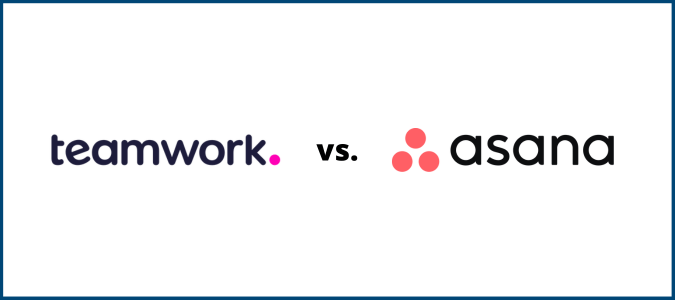Most project management software casts a wide net, allowing teams to collaborate seamlessly on projects, even across diverse departments like IT, marketing, sales, and product development. However, Pivotal Tracker takes a relatively novel approach by focusing its functionality exclusively on the Agile project management methodology. We’ll dive into all the benefits and drawbacks of that in this review.

Pivotal Tracker Compared to the Best Project Management Software
We tested dozens of platforms to come up with the options that made the cut on our post on the best project management software. Below are our Golden Eggs, the cream of the crop of PM software that fulfills the needs of the broadest range of users.
Monday.com has built-in customer relationship management (CRM) functionality, so sales and marketing teams can manage campaigns and contacts with equal ease. Try out Monday.com for free for 14 days with no credit card required.
ClickUp is versatile project management software with all the features you need to manage tasks, organize work, collaborate, and monitor project progress. Start on ClickUp’s feature-rich free-forever plan and upgrade when you’re ready.
Smartsheet helps teams convert traditional spreadsheets into cards, calendars, grids, or Gantt charts to suit your preferred workflow. Try Smartsheet free for 30 days with no credit card required.
Pivotal Tracker: The Good and the Bad
Despite not being a household name in project management circles, Pivotal Tracker is a potent tool, especially for software development teams. Some of its users include well-known brands like Twitter, Glovo, and Accenture. We’ll explore the software’s strong points and shortcomings below, so you can decide if it’s the right choice for your team.
What Pivotal Tracker Is Good At
Pivotal is specially built for Agile developers and project teams, supported by ample features to assist with collaboration, integration with your other favorite tools, and more intensive project needs like prioritization and cost or time estimates.
Made for Agile: Scrum teams will appreciate a tool built specifically for their preferred workflow. Pivotal Tracker uses terminology and workflows familiar to Agile teams, so there’s no need to spend a day or more customizing software elements and labels to match the tenets of Agile PM. Every story card has fields for adding details like story type, owner, blockers, description, and associated tasks, so you don’t have to worry about missing anything.
For example, managers can create a story for a feature, chore, bug, or release. Then, the team follows the typical Scrum workflow, with Pivotal Tracker understanding milestones and stages like prioritization, estimation, and testing. That makes this software intuitive and easy to pick up for Agile teams.
Real-time collaboration: Agile software and product development prioritizes individuals and interactions, reflected in Pivotal Tracker’s features for collaboration and visibility. Each story has an Activity section where members can discuss progress and blockers via comments, and the software provides a Follow button if a team member wants to receive notifications about updates to relevant stories or epics.
On top of that, users can tap into the @ mention feature when they need the attention of specific team members. All collaborators on an epic or story can view real-time updates and changes, starting with the most recent change or update.
Solid analytics: This software has robust reporting capabilities that help you stay on top of the health and progress of various ongoing projects. For example, the Project Overview feature captures all your essential data in a single chart or report.
You can see critical metrics like velocity, story cycle time, burnup, and cumulative flow. This view also lets you filter specific iterations, epics, or stories for a granular view of your project progress. In short, you can count on a condensed view of your project’s health and pace. The filter is also helpful for drilling down to the specifics to identify potential problems or bottlenecks.
Developer-friendly integrations: Pivotal Tracker integrates nicely with software stacks that your developers are already using. Sync the software with development tools like Zendesk, Jira, GitHub, Jenkins, and Slack. Pivotal Tracker also has a robust API if you prefer to build custom tools or integrations. You can even request Pivotal Tracker to list your app among its integrations.
Automatically calculate velocity: Pivotal Tracker lets you estimate the effort required to complete a story in one of its most unique features. Assign points to each story based on the effort required to complete it. Then, depending on the velocity strategy you set in the project settings, the software automatically calculates your current velocity based on the number of story points completed in previous iterations.
For example, the software may calculate the average velocity of your past four iterations. Then, it automatically moves the number of stories matching this average velocity from your backlog to your current iteration. This way, you always know how many stories you can complete in an iteration.
Manage related stories: This software lets you drag and drop stories from your backlog and set the order of priority. You can also change a story’s priority in either panel by simply dragging and dropping it in the correct position.
What’s great, though, is that Pivotal Tracker also lets you group related stories in an epic. You can prioritize epics independently of the stories in your backlog and see how stories fit into the larger project. Each epic also has a progress bar to track progress. The software even estimates the epic’s completion date based on the completion date of the last story in the epic.
What Pivotal Tracker Is Lacking
Pivotal Tracker has its shortcomings, but they’re largely due to the platform’s focus on Agile PM and development work. That means it isn’t terribly well-suited for other types of project management and sports a bit of a learning curve. Let’s dive into a few key factors that may make Pivotal Tracker a less-than-ideal fit for some.
Highly technical: Pivotal Tracker is created by software developers for software developers. Thus, the workflow, terminology, and other elements may be incomprehensible for non-technical teams or at least difficult and time-consuming to learn. That makes it tougher for organizations that loop in other departments like marketing or customer service to get the most out of it.
Not particularly versatile: In the same vein, the software’s biggest strength is also its shortcoming. While Agile is a terrific PM methodology for software development, its values and principles don’t always carry over to certain types of other projects.
For example, undertakings with strict timelines and predetermined outcomes work best with traditional methodologies like the waterfall model. Similarly, you wouldn’t use Agile for projects with strict legal or regulatory requirements since delays may mean fines or penalties. Also, unlike similar tools like Jira, Pivotal Tracker doesn’t let you create or add custom steps to its workflow, so it’s tough to bend the platform to fit PM approaches outside of Agile product development.
No Gantt charts: Gantt charts are a great way to simplify complex projects and show key milestones and deadlines in an easy-to-grasp visual layout. The fact that they’re missing from Pivotal Tracker isn’t a dealbreaker, as you can rely on the platform’s analytics to track progress and even integrate Pivotal Tracker with a third-party Gantt tool. But, if your team loves to lean on Gantt charts, it may be more trouble than it’s worth to have to work around the lack of that feature in this software.
Pivotal Tracker Options and Pricing
While this is a technical, capable platform for software and product development teams, Pivotal Tracker doesn’t come with the sticker shock you might expect. In fact, this software is impressively affordable, especially for small teams that are only working on a handful of projects at a time.
Pivotal Tracker Project Management
Pivotal Tracker’s pricing is straightforward and based on the number of users (which Pivotal Tracker calls “collaborators”) who need access to the platform.
There’s a free-forever plan for up to five collaborators, which is fantastic. While it only supports up to five projects, you get all the core features the software has to offer. Plus, you still have access to unlimited read-only seats, meaning you can bring clients, stakeholders, executives, or others outside of your dev team to view progress (but not edit anything).
Fortunately, if you need more than five collaborators to have access, Pivotal Tracker is still one of the cheapest PM platforms available. Teams of six to 10 users need only pay a flat rate of $10 per month for the Startup plan. That plan unlocks unlimited projects and even allows you to test drive it on a 30-day free trial.
Beyond that, you’re looking at the Standard plan, which runs $6.50 per collaborator per month. That’s still a solid bargain. The plan also has volume discounts, so you could end up paying less for the software depending on the number of users. If you’re a massive operation, you could instead opt for the custom-priced Enterprise plan, which unlocks its own unique features like single sign-on and a comprehensive project history log.

On any plan, you’re getting access to the core Agile features that make Pivotal Tracker a PM platform uniquely suited to development teams using that methodology. You can jump right in and create a new public (viewable by read-only users) or private project.
The default project view displays two panels by default, with the stories you’re working on appearing in the Current Iteration/Backlog panel while your ideas for future stories go in the Icebox panel.
You can easily drag and drop stories between the panels as needed and separate your current iteration from your backlog. The main dashboard makes it easy to find your categorized items, whether they’re active epics, blocked items, finished tasks, or custom labels.
On the downside, Pivotal Tracker doesn’t allow for much customization of the project view or dashboard. You can adjust the panel’s width or position in the project view and not much else. It might not be the end of the world for most users, but it’s worth mentioning this inflexibility.
Pivotal Tracker in Summary
If you’re looking for project management software to support Agile development workflows, Pivotal Tracker is undoubtedly a top choice, if not the outright best option around. The software is intuitive for Agile project management, with stories, iterations, epics, and everything you need to support your workflow.
Pivotal Tracker is also quite affordable, especially for small teams who might even be able to use it forever without ever paying a dime. And, with numerous native integrations, it works seamlessly with your software stack, allowing you to minimize your team’s need for context shifting.
However, it’s important to reiterate that Pivotal Tracker is the software of choice for Scrum masters and Agile dev teams. Users outside this circle may find the software difficult to use, if not entirely incomprehensible. So, most people may want to stick with more mainstream PM software that’s more adaptable to traditional project management methodologies and workflows.
Check out our post on the best project management software reviewing the best overall options on the market, including our Golden Eggs, Monday.com, ClickUp, and Smartsheet. The post delivers a detailed account of each software’s capabilities for critical project management functionality and where they rise above the rest of the pack. It might be the only resource you’ll need to make an informed, confident decision.















